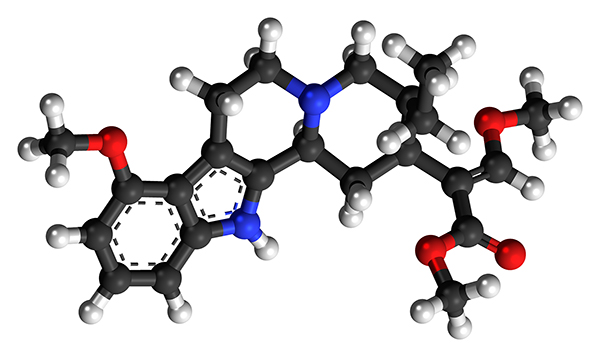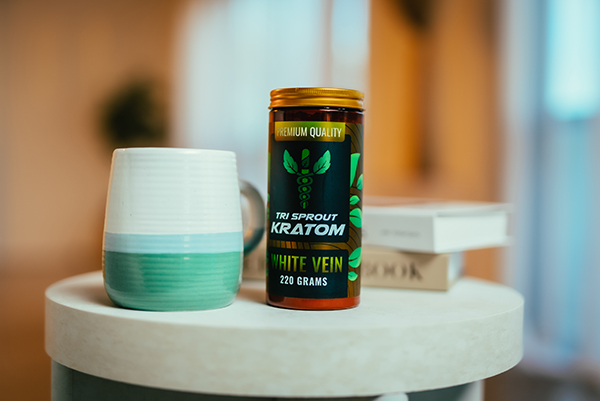Kratom, a tropical tree native to Southeast Asia, has been used for centuries in traditional medicine for its stimulating and pain-relieving properties. Recently, kratom has gained popularity in the West for its potential to support well-being, manage pain, and enhance mood. As more people explore this plant’s benefits, understanding the science behind kratom becomes crucial. This blog delves into the biochemical properties of kratom, its effects on the body, and the latest scientific research supporting its use.
What is Kratom?
Kratom (Mitragyna speciosa) is a tropical evergreen tree in the coffee family, indigenous to countries like Thailand, Indonesia, Malaysia, and Myanmar. The leaves of the kratom tree contain compounds known as alkaloids, which are responsible for its physiological effects. The two primary alkaloids in kratom, mitragynine and 7-hydroxymitragynine, interact with the body’s opioid receptors, though not in the same way as traditional opioids.

Biochemistry of Kratom: Understanding Alkaloids
Alkaloids are naturally occurring compounds that can have significant effects on human physiology. Kratom’s primary alkaloids, mitragynine, and 7-hydroxymitragynine, are known for their potential analgesic (pain-relieving) and euphoric effects. The science behind kratom shows that these alkaloids interact with opioid receptors in the brain to produce their effects.
- Mitragynine: This is the most abundant alkaloid in kratom leaves, accounting for up to 66% of the total alkaloid content. Mitragynine interacts with mu-opioid receptors in the brain, which play a role in pain perception, mood, and anxiety regulation.
- 7-Hydroxymitragynine: Although present in smaller quantities, 7-hydroxymitragynine is significantly more potent than mitragynine. It binds to opioid receptors more strongly, contributing to kratom’s pain-relieving effects.
These alkaloids are structurally different from typical opioids, which influences how they affect the body and their potential risks.

Mechanisms of Action: How Kratom Affects the Body
Kratom’s effects vary widely depending on the dosage, strain, and individual physiology. Here’s a closer look at how kratom works in the body:
- At lower doses, kratom is often stimulating. Users report increased energy, alertness, and sociability. This effect is akin to the mild stimulant effect of caffeine.
- At moderate doses, kratom can have sedative and analgesic effects. Users often experience pain relief, relaxation, and a sense of well-being. This dosage range is commonly used for managing chronic pain and improving mood.
- Higher doses can lead to more pronounced sedative effects. While this may be beneficial for those seeking relief from severe pain or anxiety, it can also increase the risk of side effects such as dizziness, nausea, or dependency.
Kratom’s interaction with opioid receptors is unique. Unlike traditional opioids, kratom has a ceiling effect, meaning there is a limit to the intensity of its effects. This potentially reduces the risk of respiratory depression—a common and dangerous side effect of opioid use. This aspect of the science behind kratom highlights its potential advantages over traditional painkillers.

Health Benefits: The Science Behind Kratom
The potential health benefits of kratom are supported by both anecdotal evidence and a growing body of scientific research. Here are some of the key areas of the science behind kratom:
- Pain Management: Kratom’s most well-documented benefit is pain relief. The alkaloids in kratom interact with the body’s opioid receptors, which can help manage various types of pain, including chronic pain, arthritis, and neuropathic pain. Unlike traditional pain medications, kratom is believed to have a lower risk of addiction and dependence.
- Mood Enhancement and Anxiety Relief: Many users report that kratom helps alleviate symptoms of anxiety and depression. The mood-enhancing effects are likely due to the activation of opioid receptors, which release endorphins and other neurotransmitters associated with mood regulation.
- Energy and Focus: In smaller doses, kratom can act as a stimulant, providing a boost in energy and mental clarity. This makes it a popular choice among individuals looking to enhance productivity or combat fatigue.
- Opioid Withdrawal Support: Kratom has been used as a natural alternative for managing opioid withdrawal symptoms. Its ability to interact with opioid receptors helps ease the symptoms of withdrawal, such as pain, anxiety, and cravings, without the high risk of dependency. This use underscores the importance of understanding the science behind kratom in the context of addiction treatment.
Safety and Side Effects: What You Need to Know
While kratom offers several potential benefits, it’s important to be aware of the safety concerns and potential side effects associated with its use. Some of the common side effects include:
- Nausea and Vomiting: These are the most commonly reported side effects, especially with higher doses.
- Dizziness and Drowsiness: Kratom’s sedative effects can cause dizziness or drowsiness, which may impair the ability to perform tasks that require attention.
- Constipation: Like other substances that affect the opioid receptors, kratom can lead to constipation.
More severe side effects are rare but can include liver toxicity and dependency, particularly with long-term or high-dose use. It’s crucial to use kratom responsibly and consult with a healthcare provider, especially if you have underlying health conditions or are taking other medications. The science behind kratom emphasizes the importance of understanding its safety profile.
The Science Behind Kratom: How Different Strains Affect the Body
Kratom is available in several strains, each with unique effects. These differences are primarily due to the varying levels of alkaloids in each strain. Here’s a quick overview:
- Red Vein Kratom: Known for its calming and pain-relieving properties, red vein kratom is often used for relaxation and managing chronic pain. It has a higher concentration of
- Green Vein Kratom: This strain offers a balanced profile of effects, including mild energy boost, pain relief, and mood enhancement. Green vein kratom is popular among those seeking a moderate, all-around effect.
- White Vein Kratom: Known for its stimulating and mood-enhancing properties, white vein kratom is often used for increased energy and focus. It’s less sedating than the red or green strains.
The choice of strain can depend on the desired effects and individual response to kratom. Tri Sprout offers a range of high-quality kratom strains, ensuring you find the right product for your needs.

Ongoing Research and Future Directions
The scientific community continues to explore kratom’s potential benefits and risks. Current research is focused on understanding kratom’s pharmacology, long-term health effects, and potential therapeutic applications. Some promising areas of study include:
- Addiction Treatment: Exploring kratom’s role in treating substance use disorders, particularly opioid addiction, due to its unique interaction with opioid receptors.
- Pain Management: Further studies on kratom’s effectiveness in managing pain and how it compares to traditional painkillers.
- Mental Health: Investigating kratom’s impact on mental health conditions such as depression, anxiety, and PTSD.
As research progresses, it’s expected that the medical and scientific understanding of kratom will continue to evolve, potentially leading to more regulated and safe use of this plant. The science behind kratom is an evolving field, with each new study adding to our understanding of this complex botanical.
How to Use Kratom Safely: Tips and Best Practices
If you decide to incorporate kratom into your wellness routine, it’s essential to do so safely and responsibly. Here are some tips:
- Start with a Low Dose: If you’re new to kratom, start with a low dose to gauge your body’s response. This helps minimize the risk of adverse effects.
- Choose Quality Products: Always purchase kratom from reputable vendors like Tri Sprout, which provides high-quality, lab-tested kratom products.
- Monitor Your Use: Keep track of how much kratom you use and how often. This can help prevent tolerance and dependency.
- Stay Informed: Stay updated on the latest research and guidelines regarding kratom use. Consult with healthcare providers for personalized advice.
- Be Mindful of Interactions: Kratom can interact with other medications and substances. If you are taking other drugs or have health conditions, consult a healthcare provider before using kratom.
Explore the Benefits of Kratom with Tri Sprout
As interest in kratom grows, so does the need for high-quality, reliable products. Tri Sprout is committed to providing top-notch kratom products that are lab-tested for purity and potency. Whether you are exploring kratom for pain relief, mood enhancement, or energy, Tri Sprout offers a range of strains to meet your needs.
Using kratom responsibly and staying informed about its effects can help you make the most of this natural botanical. With ongoing research and a growing community of users, the future of kratom looks promising for those seeking natural wellness solutions.
References
- Healthline. (2020). Kratom: Is it Safe?
- WebMD. (2023). What is Kratom?
- National Institutes of Health (NIH). (2023). Can a Controversial Tree Help End the Opioid Crisis?
*Disclaimer: This Kratom blog emphasizes that the information shared in the blogs is for educational purposes and should not be seen as a substitute for professional medical advice. It highlights the variability in individual responses to Kratom and advises caution and responsible use. This disclaimer also reminds readers to be aware of the legal status of Kratom in their area and to stay informed about the latest research on Kratom. It concludes by stressing the importance of making informed and responsible decisions regarding Kratom use and seeking medical advice when necessary.*








